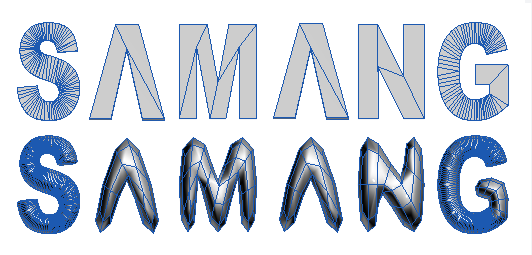One of the things customers love about subdividable CheckMate Pro v2 models is that they can zoom in for closeups on just about any part of the model.
Many hard surface objects such as appliances and electronics include 3D text extrusions or cutouts. If the text is quite small or thin compared to the overall object, you can simply use a normal map to represent such text. For times when you really do need to create 3D text, you can use the text tools in your 3D application… as long as you check the geometry afterward and clean it up.
In the image below, auto-generated text has been extruded and subdivided. The text has far more edges than needed on curved letters like S and G, while not having enough detail on straight letters like A and M. Subdivision causes several of the letters to lose their shape, meaning a customer can’t subdivide for a closeup on the letters.

3D text created with automated tools is hard to edit, has unnecessary detail, and does not subdivide well.
In just about any 3D application, after generating text with a text tool, you’ll need to remove unnecessary detail and add holding edges for subdivision. This topology gives customers the maximum number of options for how they’ll use the model, including closeups of the letters.

Holding edges on corners and intelligently-spaced edges on curves keeps the poly count reasonable for easy editing, while still providing enough detail for subdivision.
